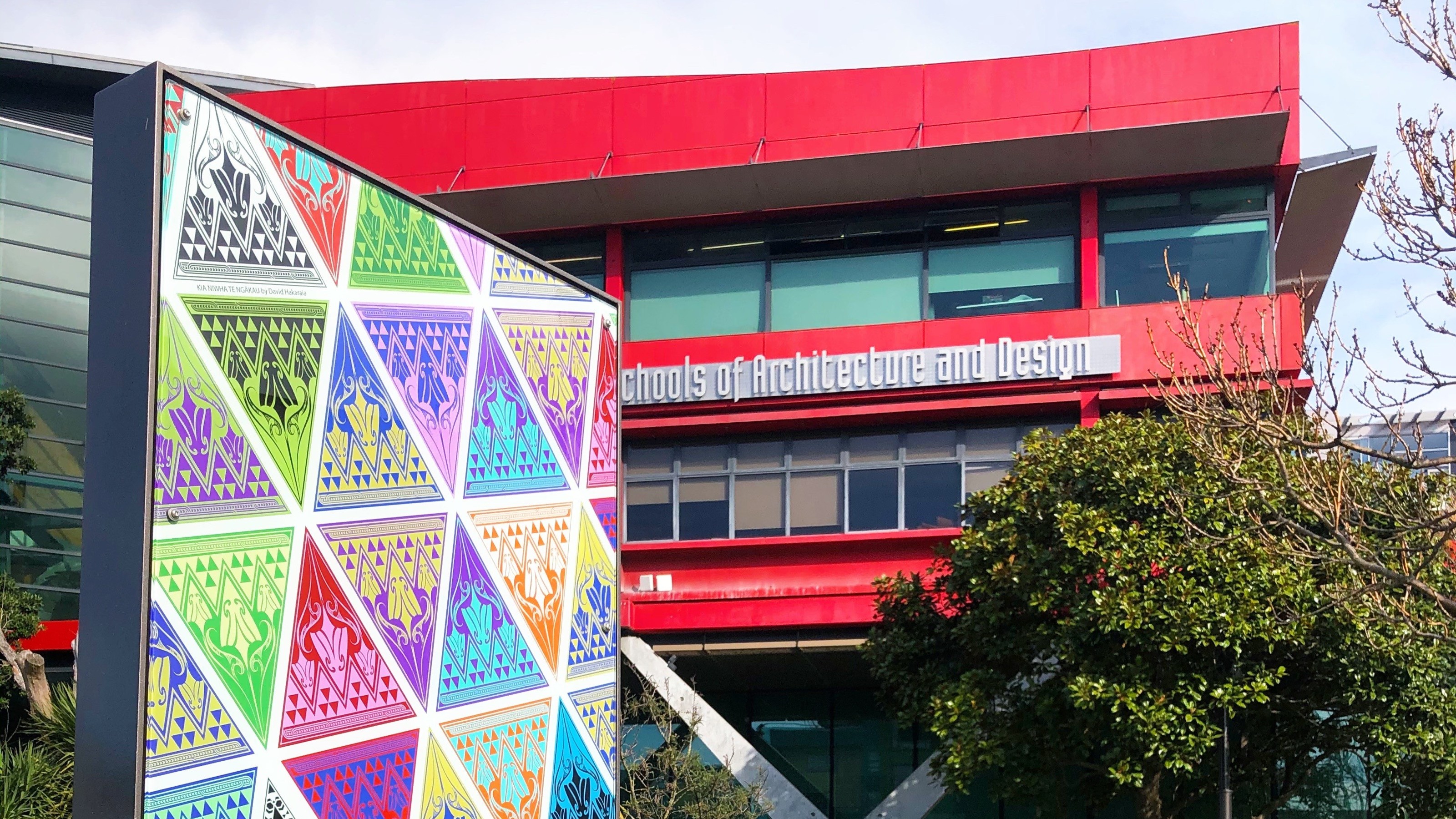Indigenous designs help Wellington celebrate Matariki 2020
Wellington’s 2020 Matariki celebrations looked uncertain thanks to the COVID-19 lockdown, however since moving out of level 4 we’ve seen a variety of events, celebrations, and installations across the city to celebrate—several of which are thanks to David Hakaraia, Lecturer at the School of Design Innovation.
David, who has previously collaborated with the Wellington City Council on designs via the WAITUHI Matariki public art series, created the flags that can be seen in Frank Kitts Park, the fire pou which burned in Odlins Plaza, a Māori mandala projected at Wellington Airport and then Te Papa for their Ahi Kā show, as well as a 9-sided fire pit that was also used in last year's celebrations.
David’s flag series represent the whai repo (stingray) that inhabit the Whairepo Lagoon and are kaitiaki (guardians) to Te Raukura and the waka associated with the Wharewaka. Their triangular shape pays homage to the three iwi, Te Ātiawa, Ngāti Tupaia and Ngāti Haumia who established themselves in the harbour prior to European settlement.
“The whai repo are orientated towards the whenua (land) of Te Whanganui-a-Tara in the lagoon and reflect the hilly landscape of the Wellington region. I also used whakarare (confusion) to represent the way the whai repo use their body and wings to disturb the mudflats when they move along the bottom of the lagoon,” explains David.
The eight flags are all coloured differently to represent the colourful flora and fauna of Aotearoa.
“I have always had an interest in the narratives relating to my Māori heritage. These stories have captured my imagination and I relish expressing them in ways that depart from a customary tribal style, creating a design approach that is distinctly my own,” says David.
The flags have been adapted into artwork for the light boxes in Cobblestone Park. Each design incorporated a whakataukī (saying) in response to current national and world events. As with his flags, the lightboxes offer a moment to pause and reflect on the world around us.
“David’s flag design proposal was selected after an open to call to Māori artists to design a series of flags that connect to the geography and whakapapa of the Whairepo Lagoon site,” says Katie Taylor-Duke, Senior Arts Adviser—Projects at Wellington City Council.
“David’s design aesthetic is strong—it disrupts the usual formality of flags and, while lyrical and playful, is meaningful and rich in symbolism.
“The flags are part of WAITUHI—a public art series timed to coincide with Matariki. The aim of WAITUHI is to take the festivities and kaupapa of Matariki to a wider audience beyond the traditional arts spaces of the galleries, museums and theatres, to enliven and activate public space with new artwork that acknowledges Māori heritage in the city.”
David also created Ahi Pou—the three metre high fire pou that greeted visitors entering Odlins Plaza for Ahi Kā Live last weekend. As well as keeping visitors warm and being a location for the performers to dance around, they represent the welcoming of the Māori new year and the Ahi Kā (keeping the home fires burning) and reflecting on the past and what’s ahead.
The whakataukī on the pou is:
Hei aha koa, Matariki atu, Matariki atu.
No matter the circumstances, Matariki will rise year after year.
Mānawa mai te putanga o te tangata, mānawa mai te putanga o Matariki.
Appreciate the emergence of people, like we appreciate the emergence of Matariki.

